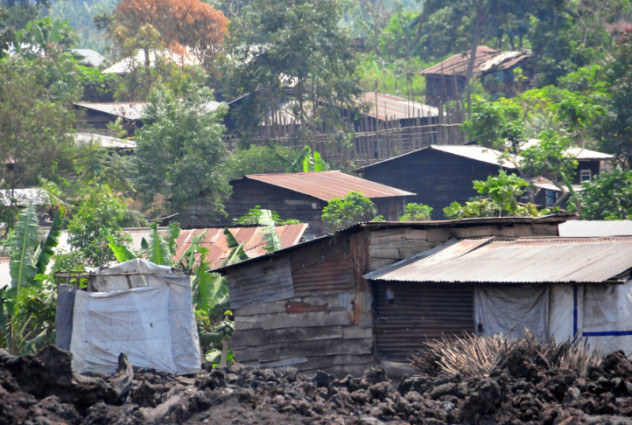 Our World
Our World  Our World
Our World  Movies and TV
Movies and TV The 10 Coolest Stars to Set Sail on The Love Boat
 History
History 10 Things You Didn’t Know About the American National Anthem
 Technology
Technology Top 10 Everyday Tech Buzzwords That Hide a Darker Past
 Humans
Humans 10 Everyday Human Behaviors That Are Actually Survival Instincts
 Animals
Animals 10 Animals That Humiliated and Harmed Historical Leaders
 History
History 10 Most Influential Protests in Modern History
 Creepy
Creepy 10 More Representations of Death from Myth, Legend, and Folktale
 Technology
Technology 10 Scientific Breakthroughs of 2025 That’ll Change Everything
 Our World
Our World 10 Ways Icelandic Culture Makes Other Countries Look Boring
 Our World
Our World 10 Ways Your Christmas Tree Is More Lit Than You Think
 Movies and TV
Movies and TV The 10 Coolest Stars to Set Sail on The Love Boat
 History
History 10 Things You Didn’t Know About the American National Anthem
Who's Behind Listverse?

Jamie Frater
Head Editor
Jamie founded Listverse due to an insatiable desire to share fascinating, obscure, and bizarre facts. He has been a guest speaker on numerous national radio and television stations and is a five time published author.
More About Us Technology
Technology Top 10 Everyday Tech Buzzwords That Hide a Darker Past
 Humans
Humans 10 Everyday Human Behaviors That Are Actually Survival Instincts
 Animals
Animals 10 Animals That Humiliated and Harmed Historical Leaders
 History
History 10 Most Influential Protests in Modern History
 Creepy
Creepy 10 More Representations of Death from Myth, Legend, and Folktale
 Technology
Technology 10 Scientific Breakthroughs of 2025 That’ll Change Everything
 Our World
Our World 10 Ways Icelandic Culture Makes Other Countries Look Boring
10 Attempts To Better People’s Lives That Went Horribly Wrong
Whether you frame them as instances of the law of unintended consequences or proof that no good deed goes unpunished, backfires are the bane of well-intentioned behavior. In a hierarchy of help to the needy, protection for the vulnerable, or health care for the sick, it’s the unforeseen circumstances and logistic flaws that emerge like apex predators on the prowl, determined to devour whatever good was hoped for and sometimes hope itself. And unfortunately, sometimes the fallouts from those failures are devastatingly drastic and widespread.
10 Amazonian Job Opportunities Create Joblessness And Disease

In the 1980s, the World Bank reached into its unfathomably deep coffers and pulled out $485 million to aid Brazil in its plans to convert large tracts of Amazon forest into viable farmland. The crown jewel of this development project was the 1,500-kilometer (900 mi) BR364 highway that extended through the Amazonian state of Rondonia and would serve as the main artery along which struggling sharecroppers and other financially challenged Brazilians would travel in hopes of receiving the warm kiss of economic prosperity. However, many found that their hopeful puckers were rebuffed with cold-shouldered hardship and unfulfilled aspirations.
The demand for land significantly outweighed the availability of land leases. As a result, more than 10,000 families who had made a hopeful trek to Rondonia were left empty-handed. But as disappointed as those landless families must have been, many who did obtain land tasted a far bitterer defeat. Thousands of would-be farmers discovered that the soil was ill-suited for traditional food staples like rice and corn. As a result, many found themselves jobless after making the long journey and clearing acres of land to set up shop.
Adding to the severity of the situation was the ever looming threat of conflict and disease. In addition to being unable to make a living off the land, many migrants to Rondonia were stricken with malaria and cholera. Because the land had been inhabited by indigenous tribes, many of them were driven away. The once hopeful venture had become an ordeal that cost hundreds of millions of dollars and saw more than 14 million acres of forest destroyed. The project was so unsuccessful that the World Bank lent additional funds to undo the mess it had unwittingly financed.
9 Tobacco Marketing Regulations Increase Appeal To Teens

Whether you’re into cigarettes or not, it’s probably safe to assume that you’re not okay with tobacco companies lying about the toxicity of their smokes or marketing them to children. However, tobacco companies have found cleverly corrupt ways to get around restrictions on both of these practices. It all boils down to exploiting the vagueness of language and basic human psychology.
Since 2010, tobacco companies have been legally barred from applying such labels as “light” and “low tar” to cigarettes due to the false impression that those products were less dangerous than normal cigarettes and the resulting disinclination to quit smoking. To circumvent the restriction, companies renamed their cigarette varieties after easily identifiable colors such as gold or silver, which consumers already associated with the deceptive tar labels. In the ensuing years, investigations into the consumer habits and beliefs of smokers showed that as many as 89–91 percent were able to identify banned cigarette labels by their new color-themed appellations. Even worse, since small cigars don’t fall under the same rigorous regulations as cigarettes, tobacco companies simply affixed the banned cigarette names to cigars to perpetuate the health misconceptions.
The legislative leeway companies have with small cigars also allows them to make headway with teenagers through the use of deceptive labels, colorful packaging, and desert-like flavors such as “Dreamsicle” and “Apple Blitz.” As a result, the sale of little cigars has skyrocketed while “light cigarette” sales have gone unchanged. Between 1997 and 2007, consumption of the less regulated tobacco products increased by 240 percent with 80 percent of sales accounted for by flavored cigars. More distressingly, as many as 40 percent of smokers in middle and high school reportedly used flavored cigars and showed a higher intention to keep smoking than the overall population of cigar smokers. With nearly 90 percent of surveyed smokers believed to have begun smoking before age 18, the implications are dire.
8 Japanese Work Program Fosters A System Of Indentured Servitude

When Japan implemented an international training program in the 1990s, it undoubtedly struck government officials and business owners alike as an attractive mix of philanthropy and lucrative pragmatism. For a fee, foreigners from developing countries like China would temporarily live and work in the country, learning skills that could generate wealth back home while the Japanese economy would be bolstered by an influx of laborers. But much in the same way that sheltered workshops attracted opportunists who saw fit to exploit the disabled, what was supposed to be Japan’s mutually beneficial stab at international aid became fodder for ruthless business sharks on the hunt for low-wage employees in a country with a dwindling workforce.
Instead of receiving an honest day’s pay for an honest day’s work, many foreign trainees found themselves receiving little to no pay for days of work. Because migrants lacked the legal protection afforded by the average Japanese citizen, they were regularly forced to perform such tasks as assembling cell phone parts for as long as 16 hours a day with inadequate breaks. The toll on overtaxed workers was tremendous. According to Japan’s Justice Ministry, at least 400 foreign trainees died from the effects of work-related exhaustion between 2005 and 2010. And in that time they were underpaid by hundreds of thousands of dollars.
Rather than providing a boon for hardworking people from developing nations, Japan had essentially ushered in a modern era of indentured servitude; trainees toiled away in exchange for a limited stay in the country. Pressed by the United Nations and other groups to crack down on workplace corruption, Japan’s government has since attempted to strengthen the rights of noncitizens while prohibiting such business practices as withholding migrants’ passports. Some critics, however, believe that the ship for ethical practices sailed too long ago for offending businesses to change course now.
7 UN Peacekeepers Provide Firearms To The Congo

The late 1990s heralded an era of unprecedented bloodletting on the continent of Africa with the Congolese Civil War. Sometimes referred to as Africa’s World War, the conflict engulfed five different countries and lasted for five years. The unending parade of infighting and starvation that persist have contributed to millions of deaths and rendered the war’s official endpoint a moot demarcation. To help quell the incessant violence and mayhem, the United Nations sent peacekeepers to disarm warring rebels and maintain a sense of order. But in towns like Mongbwalu, where Pakistani peacekeepers were situated, the United Nations’ presence appears to have ultimately enhanced the killing capacity of warring factions.
According to BBC investigators, after initially maintaining relative stability in Mongbwalu, stationed United Nations troops ultimately began trading guns to the people they were supposed to be disarming in exchange for gold. Militia commanders such as the outrageously named Kung Fu and Dragon openly admitted to receiving arms from Pakistani officials while members of Mongbwalu’s mining community attested to witnessing the shady deals take place. An investigative team arrived on the scene in 2006 to assess accusations of corruption but was rebuffed with a barbed wire barrier and armored vehicles when they got too close to a computer that allegedly contained incriminating evidence.
Ultimately, the United Nations backed down and appeared to attempt a cover-up as a means of maintaining good relations with Pakistan, which sends large numbers of people to help on missions. In the aftermath, a single officer was charged with gold smuggling and all talk of weapons trading was dismissed. Later, similar accusations of illicit weapons deals arose against Indian troops stationed in Congo. The United Nations found evidence of gold trading, but nothing that would implicate its troops in facilitating death. The number of guns reshuffled onto Congolese battlefields by UN troops is anybody’s grim guess.
6 Laws To Protect Romanian Orphans Make Adoption Virtually Impossible

Among the darker chapters of Communism was the reign of Nicolae Ceausescu, a Romanian dictator bent on building an army of subservient workers by requiring all women to bear at least five children and prohibiting contraception. Unable to meet the material demands of such large families, many Romanian mothers began leaving their children at orphanages. After Ceausescu’s 1989 disposal, the world learned about these orphanages and was so horrified by the squalid conditions in which the children lived that many international families leapt at the chance to adopt them. But the fast-and-loose fashion of many of these adoptions stoked concern in the European Union, which encouraged Romania to tighten its laws in order to protect vulnerable orphans. The resulting law was a logistical nightmare.
The Romanian government set out to keep families together and children out of state care by mandating that no child under two years old be admitted to an orphanage and that no adoption was permissible without the signed consent of the mother or next of kin, independent of the length of time spent separated from the child. International adoptions were discontinued altogether. Romanian mothers responded to the changes by using hospitals as surrogate orphanages, abandoning their babies at maternity wards in the tens of thousands. Those old enough to be adopted were trapped in an excruciating limbo, since a parent intent on maintaining parental ties could simply visit the child at a hospital and deny adoption opportunities. Children who had been abandoned had no one to give consent.
With the moratorium on international adoptions preventing hundreds—if not thousands—of adoptions annually and restrictions shackling the process domestically, Romania still had nearly as many orphans as it did in 1989 by 2012. With only a tiny fraction of these roughly 70,000 children eligible for adoption, Romania has attempted to loosen its laws to promote more adoptions. But to truly make headway, the cycle of child abandonment must also be broken.
5 The Environmental Protection Agency Increases Lead Exposure In Mexico

As America grapples with its fear of Mexican immigrants crossing the border, Mexico is increasingly inundated by a foreign presence that brings tidings of neurological and organ damage. Thanks to regulations set by the Environmental Protection Agency (EPA) to reduce the amount of lead pollution produced during battery recycling, American companies are simply exporting batteries to Mexico, where lax standards translate into lower costs and processing methods.
The economics of the situation are inescapably obvious. Companies looking to save money fare better by shipping their batteries to a foreign facility where people will handle them with hammers than by investing in more costly complex methods. Consequently, from 2004 to 2011, Mexico—where companies are permitted to release 20 times more lead into the atmosphere than in the United States—saw imports of spent lead-acid batteries increase between 449 and 552 percent. With tens of millions of car and industrial batteries crossing the border, communities surrounding battery processing centers are increasingly exposed to hostile air and soil.
Many Mexican parents in affected communities have observed developmental delays and other telltale signs of lead poisoning in their children. A lack of direct research prevents parents and doctors from being able to directly tie increases in lead poisoning cases to the recycling plants, but the evidence is disconcerting. To provide a window into the possibility, the New York Times sampled a playground located not far from a Mexican battery recycler and found lead levels five times greater than what the United States considers acceptable. Worse yet, as the battery recycling business migrates to Mexico, American facilities are closing down, portending a net increase in lead exposure as safer practices are increasingly abandoned for the sake of economic expediency and possibly dooming generations of people to poisoning.
4 Loopholes In Coal Mining Safety Regulations Seriously Endanger Miners

With occupational hazards like contracting black lung by inhaling dusty air and being snuffed out like a flame by way of mine explosion, it’s natural to think of the words “safety” and “coal mining” as an oxymoronic pairing. To parry these perils, the United States Mine Safety and Health Administration (MSHA) passed various regulations from the 1950s onward. Despite initial declines in respiratory ailments and accidents, cases of black lung are once again on the rise in America’s bedrock of industrial mining, West Virginia, and 2010 saw the deadliest coal mine explosion since 1970. Tragically, these modern horrors are made possible in part by catastrophic flaws in the very policies intended to prevent them.
Among the many glaring weaknesses in MSHA regulation, mining companies are permitted to assess the quality of their own air using dust pumps. Managers find shifty ways to circumambulate the rules. According to miners interviewed by the West Virginia Gazette, dust pumps are sometimes stored in lunch boxes and mine offices to mask the severity of the air’s coal dust saturation. When inspectors are on site to evaluate working conditions, mines are allowed to reduce their work rate by as much as 50 percent, sparing the lungs of the inspector but also making it incredibly difficult to gauge firsthand what kind of respiratory beating miners regularly receive. Mining companies are allowed to retest the air, which provides opportunities to send inaccurate but compliant air samples as well as numerous extensions on compliance deadlines.
A similar problem prevents the MSHA from prosecuting mining companies whose locations are determined to be structurally unsafe or otherwise too dangerous for workers. While the MSHA has mandated harsher penalties for violations, it allows mining companies to contest the charges, delaying fines and corrective action. Moreover, a 24-month statute of limitations prevents violations older than two years from being pursued. Seizing an opportunity to game the system, companies like Massey Energy repeatedly contest cases brought against them. A mounting backlog of cases accumulates, and the protections put in place to protect miners are rendered impotent in the face of imminent abuses.
3 Antidepressant Warning Labels Increase Suicide Risk

In 2003, the media caught wind of a harrowing pharmacological trend; some antidepressants on the market appeared to increase the risk of suicide. Faced with this awful irony, the FDA and other regulatory bodies began to issue warnings about the increased risk of self-harm. However, researchers—the skeptical animals that they are—questioned whether the alarm had been sounded prematurely at the risk of harming patients seeking help for depression by discouraging potentially valuable treatment. Scientific investigations would ultimately suggest that those concerns are not only valid, but that issuing suicide warnings had the devastating effect of increasing suicide attempts among depression sufferers.
One of those studies was a 2008 analysis into the behavior observed in 265,000 depression patients based in Manitoba during the nine years before and two years after Health Canada cautioned the public about the use of certain depression medications. The results were as drastic as they were demoralizing. While not all patients were adversely affected, children and adolescents were 25 percent more likely to commit suicide after the warnings were posted. This also coincided with a 14 percent drop in antidepressant prescriptions for those groups and up to a 40 percent decrease in the use of most new antidepressants. The warnings appeared to achieve the exact opposite of their aim.
A more recent study conducted by Harvard Medical School examined 2.5 million teenagers and young adults over the span of a decade. Echoing the Manitoba findings, the Harvard researchers also observed dramatic leaps in attempted suicides with teenagers becoming 22 percent more likely and young adults becoming 34 percent more likely to attempt ending their lives following the medicine warnings. Once more, antidepressant prescriptions declined steeply, darkly delineating a scenario in which depression patients who try to defend against harmful medicine ending up spiraling deeper into despair and eventual self-destructiveness. The fact that this resulted not from some theoretically avoidable moral hazard or loophole to be closed, but an earnest effort to save lives, is perhaps the bitterest pill to swallow.
2 Mandatory Arrest Laws In Domestic Abuses Cases Decrease Reporting And Increase Homicide

Domestic violence is arguably the unkindest of cruelties—a harm suffered at the hands of someone that the victim is tethered to emotionally and sometimes monetarily. It is also an offense the United States and other legal systems have done a historically abysmal job of addressing adequately. In 1984, America saw a push to correct this shortcoming by implementing mandatory arrest laws. Relying on a small study which suggested that rates of violence would drop if officers arrested abusers, states all over America began requiring officers arriving at the scene of violent domestic disputes to arrest the offending party regardless of whether the victim requested it. History, however, did not bear out the encouraging implications of the domestic violence study.
What legislators and scientists alike hadn’t anticipated was a drastic drop in reporting among women—the primary victims of domestic violence—who lived in states with mandatory laws. Whether impeded by fear of reprisal or guilt, women were silenced by a reluctance to see their significant others incarcerated. The starkness of the trend is unsettling, with rates of homicide 50 percent higher in states that have mandatory arrest laws than in states without. Even more alarmingly, the decrease in domestic violence reports has also been observed abroad. According to magistrates in the United Kingdom, a 2008 law requiring domestic violence to be treated as a criminal offense rather than a civil matter seemed to precipitate a 25 to 30 percent decline in protection orders from victims.
In a volley to enhance much-needed protections for people under threat from the ones they should be able to trust most, legislators may have inadvertently increased their vulnerability through forced arrests. But this should not be taken as a rebuke of those efforts. The urgency of separating violent attackers from the people they prey upon is paramount. Unfortunately, the empirics of domestic violence suggest that the solution will be far more complicated than automated justice can achieve.
1 A Bid For Clean Drinking Water Results In Mass Poisonings

Bangladesh has long had an intimate and at times acrimonious relationship with water. Its annual floods bring tidings of agricultural opportunity while simultaneously threatening to wash away crops and endanger lives. The country is situated by water, and yet many people are unable to drink safely due to surface water being tainted with sewage and bacteria. To rectify the problem of surface water potability, the Bangladeshi government in conjunction with UNICEF added a million drinking wells in the 1970s and ’80s. Testing by British geologists concluded in 1992 confirmed the waters’ nontoxicity, and with that began what the World Health Organization once deemed “the largest mass poisoning of a population in history.”
This was not a case of negligence. The British Geological Survey (BGS) appeared to have done its due diligence in testing water toxicity, but no one anticipated that the rocks along which Bangladesh’s well water flowed were tainted with arsenic. Within three years of the BGS’s assurances, people began developing the skin lesion characteristic of arsenic poisoning. By 2006, as many as 35 million Bangladeshis were thought to have consumed arsenic-laced water. By 2010, the estimated number of people who consumed dangerous levels of the poison reached as high as 77 million, with a study of 12,000 Bangladeshis suggesting that up to 20 percent of deaths were related to arsenic’s deleterious effects.
At least two separate attempts were made to sue the BGS for failing to test Bangladesh’s water for arsenic, but the British high court struck down the lawsuits on the reasonable but nonetheless heartrending rationale that the group could not be held accountable for what it failed to assess. Now, for all its hopes and endeavors, Bangladesh is a country that thirsts for relief from the water it so hopefully sought.








